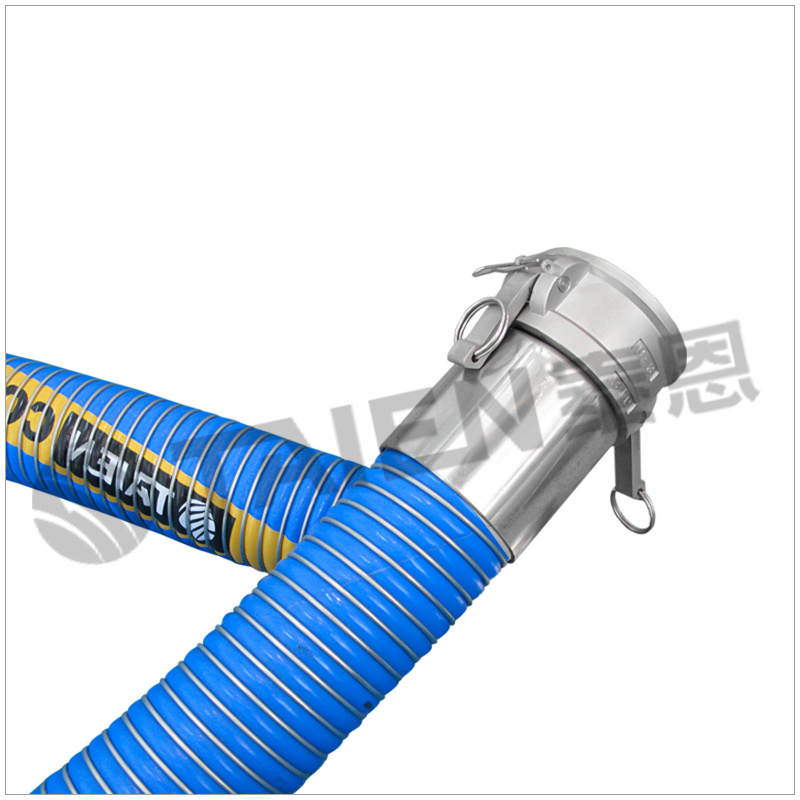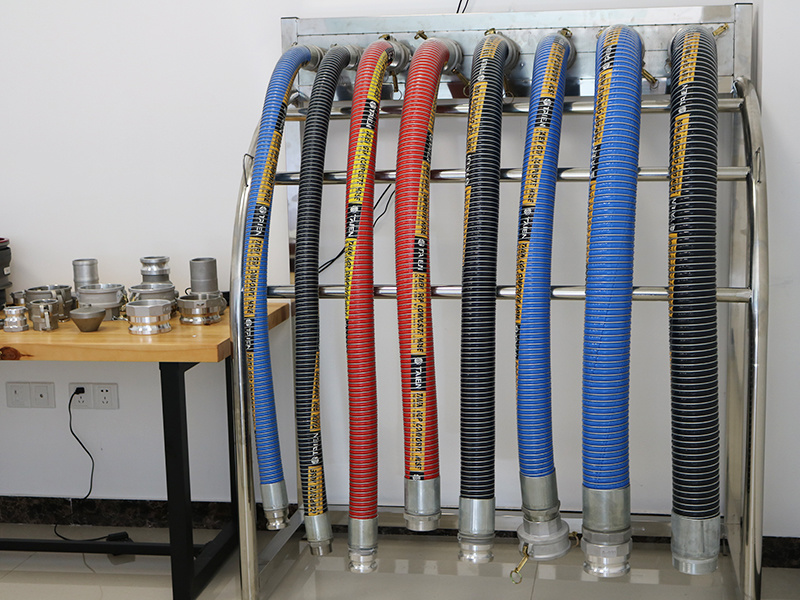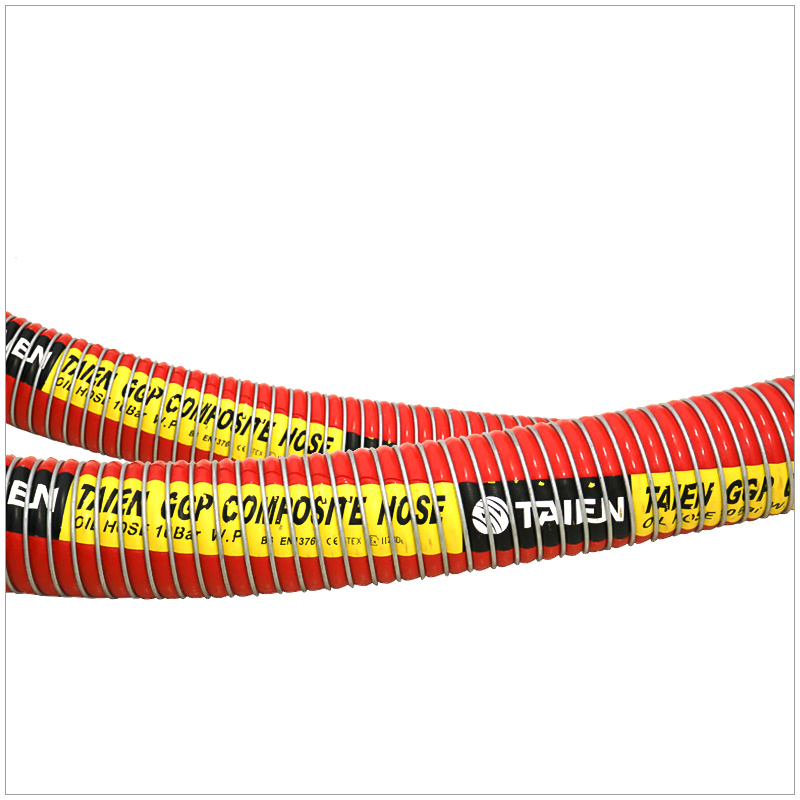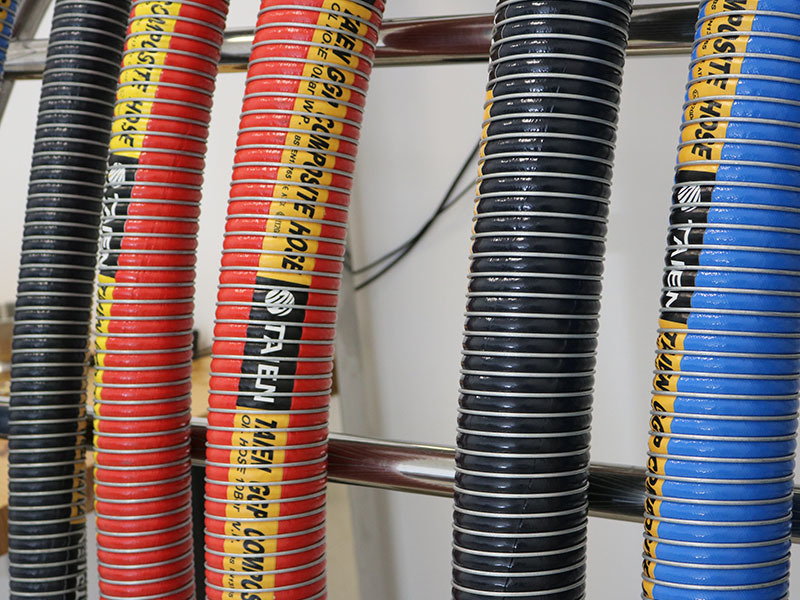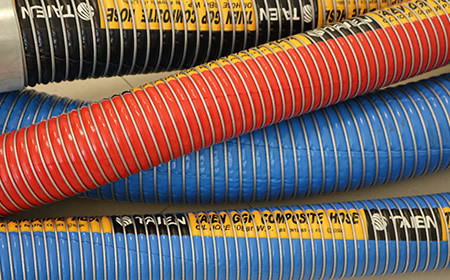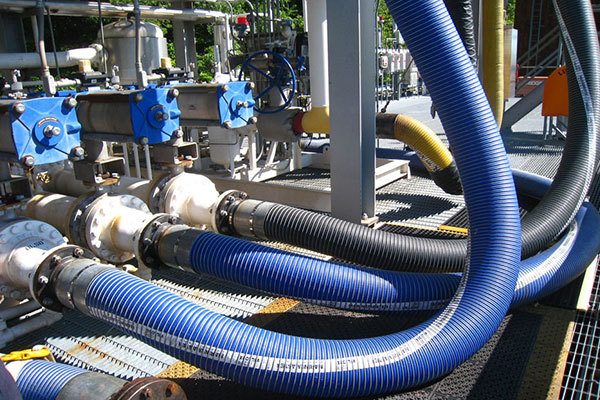How Oil Hoses Impact Equipment Efficiency: A Comprehensive Guide
Release time:
2025-07-13
Author:
Source:
Abstract
How Oil Hoses Impact Equipment Efficiency: A Comprehensive Guide
Table of Contents
1. Introduction to Oil Hoses and Their Importance
2. Understanding Oil Hoses: Types and Specifications
2.1. Types of Oil Hoses
2.2. Key Specifications of Oil Hoses
3. The Role of Oil Hoses in Equipment Performance
3.1. Fluid Dynamics and Efficiency
3.2. Impact on Pressure and Flow Rate
4. Common Issu
How Oil Hoses Impact Equipment Efficiency: A Comprehensive Guide
Table of Contents
1. Introduction to Oil Hoses and Their Importance
2. Understanding Oil Hoses: Types and Specifications
2.1. Types of Oil Hoses
2.2. Key Specifications of Oil Hoses
3. The Role of Oil Hoses in Equipment Performance
3.1. Fluid Dynamics and Efficiency
3.2. Impact on Pressure and Flow Rate
4. Common Issues with Oil Hoses and Their Effects on Efficiency
4.1. Wear and Tear
4.2. Blockages and Restrictions
5. Best Practices for Maintaining Oil Hoses
5.1. Regular Inspections
5.2. Correct Installation Techniques
6. Choosing the Right Oil Hose for Your Equipment
6.1. Determining the Right Size and Length
6.2. Selecting Compatible Materials
7. Future Trends in Oil Hose Technology
8. FAQs about Oil Hoses and Equipment Efficiency
9. Conclusion
1. Introduction to Oil Hoses and Their Importance
Oil hoses serve a pivotal role in various industrial applications, facilitating the transfer of lubricants and other fluids vital for machinery operation. Their quality directly correlates with the efficiency of equipment, influencing everything from performance to lifespan. In this article, we will delve into how oil hoses affect equipment efficiency, exploring their types, specifications, common issues, maintenance, and best practices for optimizing their usage.
2. Understanding Oil Hoses: Types and Specifications
Before we can grasp the impact of oil hoses on efficiency, it’s essential to understand the different types available and their specifications.
2.1. Types of Oil Hoses
Oil hoses come in various types, each designed for specific applications. The most common types include:
- **Rubber Oil Hoses**: Flexible and resilient, ideal for general oil transfer.
- **PVC Oil Hoses**: Lightweight and cost-effective, suitable for low-pressure applications.
- **Stainless Steel Braided Hoses**: Highly durable, perfect for high-pressure and high-temperature environments.
- **PTFE (Teflon) Hoses**: Excellent chemical resistance, used in aggressive environments.
2.2. Key Specifications of Oil Hoses
The efficiency of oil hoses is influenced by their specifications, including:
- **Inner Diameter**: Affects flow rate and pressure.
- **Working Pressure**: Determines the maximum pressure the hose can handle.
- **Temperature Range**: Specifies the range of temperatures the hose can withstand without degradation.
- **Material Composition**: Impacts flexibility, durability, and compatibility with different fluids.
3. The Role of Oil Hoses in Equipment Performance
Oil hoses are not merely conduits; they are critical components that influence various aspects of equipment performance.
3.1. Fluid Dynamics and Efficiency
The design of oil hoses impacts fluid dynamics significantly. An appropriately sized hose minimizes turbulence and resistance, enhancing the flow of oil. This efficiency directly translates to improved equipment functionality, reducing energy consumption and operational costs.
3.2. Impact on Pressure and Flow Rate
Pressure loss can occur due to inadequate hose size or blockages, leading to decreased efficiency in machinery. By ensuring the correct diameter and maintaining clean, unobstructed hoses, organizations can optimize flow rates, preserving the health of their equipment.
4. Common Issues with Oil Hoses and Their Effects on Efficiency
Despite their importance, oil hoses can encounter several issues that diminish equipment efficiency.
4.1. Wear and Tear
Over time, oil hoses can suffer from wear and tear due to friction, exposure to harsh chemicals, and extreme temperatures. This degradation can lead to leaks, reduced oil flow, and ultimately, equipment failure.
4.2. Blockages and Restrictions
Contaminants, such as dirt and debris, can accumulate within hoses, creating blockages that restrict oil flow. This can cause overheating and increased energy consumption, adversely affecting overall efficiency.
5. Best Practices for Maintaining Oil Hoses
To ensure the longevity and performance of oil hoses, it's essential to adopt best maintenance practices.
5.1. Regular Inspections
Conducting routine inspections of oil hoses allows for early detection of issues. Look for signs of wear, leaks, or bulging, and address these problems immediately to prevent further damage.
5.2. Correct Installation Techniques
Proper installation is crucial for maximum efficiency. Ensure hoses are fitted correctly, avoiding sharp bends that can restrict flow and cause unnecessary wear.
6. Choosing the Right Oil Hose for Your Equipment
Selecting the appropriate oil hose is fundamental to maintaining equipment efficiency.
6.1. Determining the Right Size and Length
Choose hoses with the correct inner diameter and length to match your equipment specifications. A hose that is too long or narrow can lead to pressure drops and decreased efficiency.
6.2. Selecting Compatible Materials
Ensure that the hose material is compatible with the fluids it will carry. Using the wrong material can lead to hose failure and equipment damage.
7. Future Trends in Oil Hose Technology
As technology advances, so do the materials and designs used in oil hoses. Future trends may include:
- **Smart Hoses**: Incorporating sensors to monitor flow rates and pressure in real-time.
- **Bio-based Materials**: Developing eco-friendly hoses that offer the same durability as traditional materials while reducing environmental impact.
- **Enhanced Durability**: Innovations aimed at improving resistance to extreme temperatures and chemicals.
8. FAQs about Oil Hoses and Equipment Efficiency
**Q1: How often should I inspect my oil hoses?**
A1: It is advisable to inspect oil hoses every three to six months, depending on usage and environmental conditions.
**Q2: What are the signs of a failing oil hose?**
A2: Look for leaks, bulging, cracks, or any signs of discoloration, which indicate wear and potential failure.
**Q3: Can I use any type of oil hose for my equipment?**
A3: No, it’s crucial to select hoses compatible with your specific equipment and the fluids being used.
**Q4: How can I prolong the life of my oil hoses?**
A4: Regular inspections, proper installation, and avoiding extreme bends can help extend the life of your hoses.
**Q5: What should I do if I notice a leak in my oil hose?**
A5: Immediately shut down the equipment and replace the hose to prevent further damage and ensure safety.
9. Conclusion
In conclusion, oil hoses play an indispensable role in the efficiency of your equipment. By understanding their types, specifications, and the common issues that can arise, you can take proactive measures to maintain and optimize their performance. Regular inspections and selecting the right hoses for your specific needs will not only enhance efficiency but also extend the lifespan of your machinery. Embracing best practices in the care and selection of oil hoses ensures that your equipment operates at peak performance, saving you time and resources in the long run.
Recommended Reading







